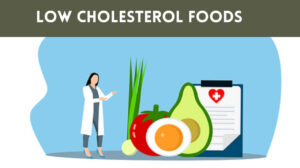
Many people often mistaken when distinguishing a stroke and a heart attack. Though both require different handling. Although both of these medical conditions often occur suddenly, but each has different symptoms. Hence, how to distinguish the symptoms of a heart attack with stroke? Here is the difference between stroke and heart attack symptoms.
Different causes of stroke and heart attack
The cause of the heart attack.
A heart attack is a medical condition that occurs due to the narrowing of the coronary arteries (the blood vessels that supply blood to the heart) so that the blood flow becomes very limited and stopped. Coronary artery blockage can occur if blood cholesterol levels are too high and eventually clog the bloodstream. These conditions make the blood circulation slows down until it completely stops. (Read more about The natural way to lower cholesterol)
The cause of the stroke.
The most common type of stroke is ischemic stroke. Ischemic strokes occur when blood vessels that served to supply blood to the brain is blocked by the blood froze. The causes of the occurrence of ischemic stroke are as follows:
- Blood clotting Occurs in arteries in the brain, it can cut off the circulation of blood towards the brain. (Read How To Prevent A Blood Clot)
- The presence of plaque buildup in the carotid artery (in the neck area) which is in charge of bringing blood to the brain, then the plaque off and headed to the blood vessels in the brain, which in the end result in stroke.
The other type of stroke is a hemorrhagic stroke. This condition occurs when a blood vessel in the brain breaks and blood spills into the surrounding tissue. The blood that leaked then accumulate and inhibit brain tissue around it. One of the risk factors is high blood pressure where it presses the arteries causing hemorrhagic stroke.
Do not mistake the difference between stroke and heart attack symptoms
Indeed, sometimes the symptoms of heart attack and stroke have a resemblance so difficult to distinguish when symptoms appear. But actually, you can distinguish the signs from both these diseases by observing the following points:
The symptoms of a heart attack.

Heart attack symptoms are the most common, are:
- Chest feels pain and discomfort.
- The existence of a sense of discomfort in the upper body area.
- Shortness of breath.
- Appear cold sweat.
- Fatigue.
- Nausea and vomiting.
- Mild headache.
Heart attack symptoms can vary for everyone, even some of them did not show any symptoms. While the other suffered a mild heart attack symptoms to severe. Most heart attacks occur suddenly, but many people get “warning” of heart attacks for hours, days, even weeks before.
Symptoms of a stroke.
Symptoms of a stroke are visible, depending on which part of the brain damaged. Stroke sufferers can experience a number of problems in memory, the ability to talk, muscle control, and various other functions.
Signs of stroke are common, include:
- Suddenly feel numb or weak in the areas of the face, arms, or legs that tend to occur on only one side of the body
- Difficulty in speaking or in understanding talks
- Trouble seeing with one or both eyes
- Severe headache suddenly, sometimes accompanied by vomiting, dizziness, and awareness of change
- One side of the face looks “SAG” and does not work
- One arm is weak and numb
The American Stroke Association recommends the F.A.S.T methods to identify the signs of a stroke:
- F (Face): when you’re smiling, one side of the face falls down or “SAG”?
- A (Arms): when you lift both arms, does one arm fall limp and fall down?
- S (Speech): Whether Your speech is not clear, such as Lisp or nasal? Is there any trouble talking?
- T (Time): Should immediately call 911 or visit your nearest health care if you experienced this.
Differences in heart attack and stroke treatment

The handling of a heart attack.
The healing process of a heart attack takes more than just treatment and healthy lifestyle changes. In certain cases, a heart bypass surgery (Coronary Artery Bypass Graft) and angioplasty may be needed. During the process of heart bypass surgery, the doctor will take a blood vessels from other parts of your body and stick it to the arteries are clogged. This will change around the clogged section on blood vessels. While in the process of angioplasty, performed using a catheter that has a small balloon at the end. Then the catheter is inserted into the blood vessels, so that the balloon will expand on the area of the blockage occurring. The balloons will hit the artery walls to trigger the opening of the blood flow.
After the process is done, you are required to do the cardiac rehabilitation. Typically, it lasts for several weeks, accompanied by the existence of monitoring about diet, lifestyle, medication to restore heart health.
Handling strokes.
Usually, making a healthy lifestyle is highly recommended for stroke. When the ischemic stroke detected within a few hours since the symptoms appeared, maybe the doctor will give a medicine called tissue Plasminogen Activator (tPA), its function is to resolve blood clots located in blood vessels.
While in some cases of hemorrhagic stroke, surgery needs to be done to repair the damaged blood vessels. In some cases, the doctor will use a special clip to secure part of the broken blood vessels.
To find out which conditions you are experiencing, you should consult a doctor. That way, you can get precise and fast handling in accordance with your condition.
Thank you very much for reading Difference between stroke and heart attack symptoms, hopefully useful.


